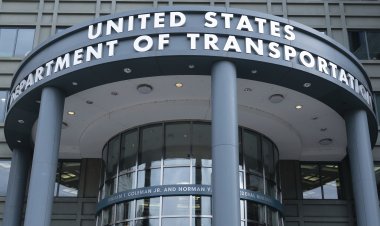Mass Deportations in the US: A Historical Overview
Donald Trump has pledged to deport millions on “Day One.” He wouldn't be the first president to conduct mass roundups of undocumented immigrants.

Mass deportations are a recurring theme in U.S. history. To pursue his objectives, the president-elect plans to leverage the Alien Enemies Act of 1798, a wartime statute permitting the president to deport non-citizens regarded as enemies of the nation. While campaigning, Trump indicated he would implement “Operation Aurora” to detain and deport immigrant criminals, including members of the notorious Tren de Aragua gang that gained notoriety in Aurora, Colorado.
Trump would not be the first to implement mass deportations of undocumented immigrants. He would need to substantially increase the deportation numbers from his previous presidency to establish any record. Historically, significant "mass deportations" in the U.S. have not always involved the physical removal of large numbers of individuals. Often, high-pressure publicity campaigns have incited enough fear among immigrant communities to lead to "self-deportation."
As historian Kelly Lytle-Hernández from UCLA notes, sometimes fear alone suffices. “Strongly encouraging and frightening people into leaving will be a main strategy,” she observes.
A look back at previous mass deportation efforts provides context.
**Irish Expulsion**
In the 1800s, the U.S. confronted one of its early immigration challenges. The Irish potato famine led to a surge of immigrants, which fueled nativist sentiments in states like New York and Massachusetts. The influx of Catholic immigrants outpaced the native-born Protestant population, causing tensions over limited state resources. The "American Party," later known as the Know-Nothing Party, embraced nationalism and anti-immigration rhetoric that resonated due to economic concerns. This party gained control of the Massachusetts legislature.
A lesser-known episode of state-led expulsions laid the groundwork for the federal deportation system. Hidetaka Hirota, a historian at UC Berkeley, explains that an anti-poverty law in Massachusetts permitted the deportation of foreigners reliant on state aid. Initially a financial rationale evolved to encompass ethnic and religious factors, particularly against Irish Catholics.
State officials checked public records to identify immigrants to remove. Some were transported to other states like New York, while others were sent north to Canada, and in some instances, individuals like Mary Williams and her U.S.-born child were shipped back to Ireland. Hirota estimates that around 50,000 people were expelled from Massachusetts in the mid-1800s, marking the first use of police power to limit immigration.
**The Palmer Raids and the “Soviet Ark”**
By the late 19th century, the federal government became more involved in immigration, redefining who could be deemed "excludable and deportable." In 1882, the Chinese Exclusion Act halted all immigration from Asia. Following the Bolshevik Revolution in Russia and the onset of World War I, anti-immigrant anxiety surged. During this "Red Scare," the government monitored labor leaders and political dissidents, leading to the passage of the Sedition Act of 1918.
In spring 1919, a radical anarchist, Carlo Valdinoci, bombed Attorney General A. Mitchell Palmer’s home, triggering a series of mass arrests under Palmer’s directive. He focused on deportations, asserting that 90 percent of anarchist threats derived from “aliens.”
The deportees mainly included alleged leftist radicals from Eastern Europe, Russia, or Italy, among them notable anarchists like Alexander Berkman and Emma Goldman. Both, stripped of citizenship after their arrest, were deported on the USS Buford to Russia, a vessel dubbed the Soviet Ark.
By the end of 1920, the raids were deemed largely ineffective, with the FBI now reflecting on them as a low point in its history.
**“Mexican Repatriation”**
During the Great Depression, economic hardship led to heightened xenophobia, particularly towards Mexicans, who were accused of taking jobs from Americans. President Herbert Hoover promoted plans aimed at securing “American jobs for real Americans,” which implied that those who were non-white were less deserving of such opportunities. Local agencies began restricting aid for immigrants, and discussions emerged concerning the deportation of those considered a "public charge."
Raids in cities like California, Michigan, and Illinois led to the return of over a million Mexicans by the mid-1930s. However, the actual number formally deported was closer to 80,000, according to the Immigration and Naturalization Service. The majority were compelled to leave voluntarily as a result of the fear instigated by raids, such as the infamous one at La Placita Park in Los Angeles, where 400 people were deported indiscriminately.
By 1935, one-third of Los Angeles's Chicano population had vanished, with up to 60 percent of those departing being U.S. citizens.
**“Operation Wetback”**
Regarded as the largest mass deportation in U.S. history, “Operation Wetback” is often viewed as a model for Trump’s potential immigration strategies. This operation emerged in the context of the Bracero program, enabling Mexican farm workers to address labor shortages during World War II, which brought in around 300,000 immigrants annually. Yet, many employers in states like Texas opted to hire undocumented workers instead.
In 1954, President Dwight D. Eisenhower launched a large political campaign and deportation initiative targeting Mexican immigration, named derogatorily for immigrants crossing rivers to enter the U.S. While not an extended operation, it involved wide-ranging sweeps across factories and farms. U.S. immigration officers practiced tactics that included deporting individuals deep into Mexico to discourage re-entry.
The INS claimed success, alleging the deportation of over a million people, although historians like Lytle-Hernández argue that these figures were inflated—most deportations were voluntary departures.
Ultimately, similar to the Mexican repatriation efforts of the 1930s, the true impact of “Operation Wetback” lay in the fear it generated, which Lytle-Hernández characterizes as a publicity stunt aimed at terrorizing immigrants through roadblocks and raids that attracted media coverage.
**The Deporter-in-Chief**
Half a century later, President Barack Obama earned the title "Deporter-in-Chief" among pro-immigration advocates due to his administration’s record, having deported nearly 3 million individuals—more than any previous administration. Nevertheless, his immigration legacy is nuanced, as he also enacted measures like DACA to protect immigrants who came to the U.S. as children.
Obama’s approach differed in that deportations were not carried out in the same manner as prior presidents; rather, they reflected a larger shift in U.S. immigration policy. His administration focused mainly on recent border crossers and individuals with criminal records.
During Trump’s first term, over 1.5 million individuals were deported, including the separation of thousands of children from their parents due to his “zero tolerance” policy. Currently, President Joe Biden appears set to match Trump’s deportation record by the end of his term on January 20.
Should Trump fulfill his promises for the 2024 campaign, it’s likely he will aim for an even higher number of deportations in the next four years.
Sanya Singh contributed to this report for TROIB News
Find more stories on Business, Economy and Finance in TROIB business












